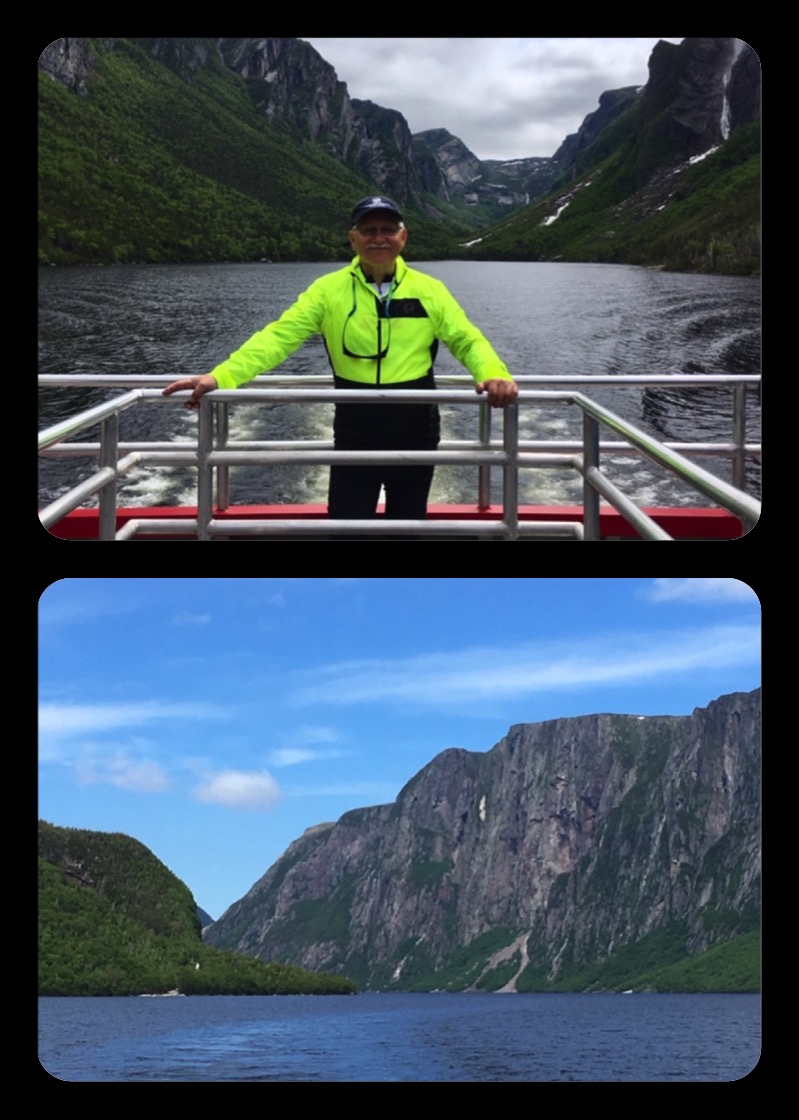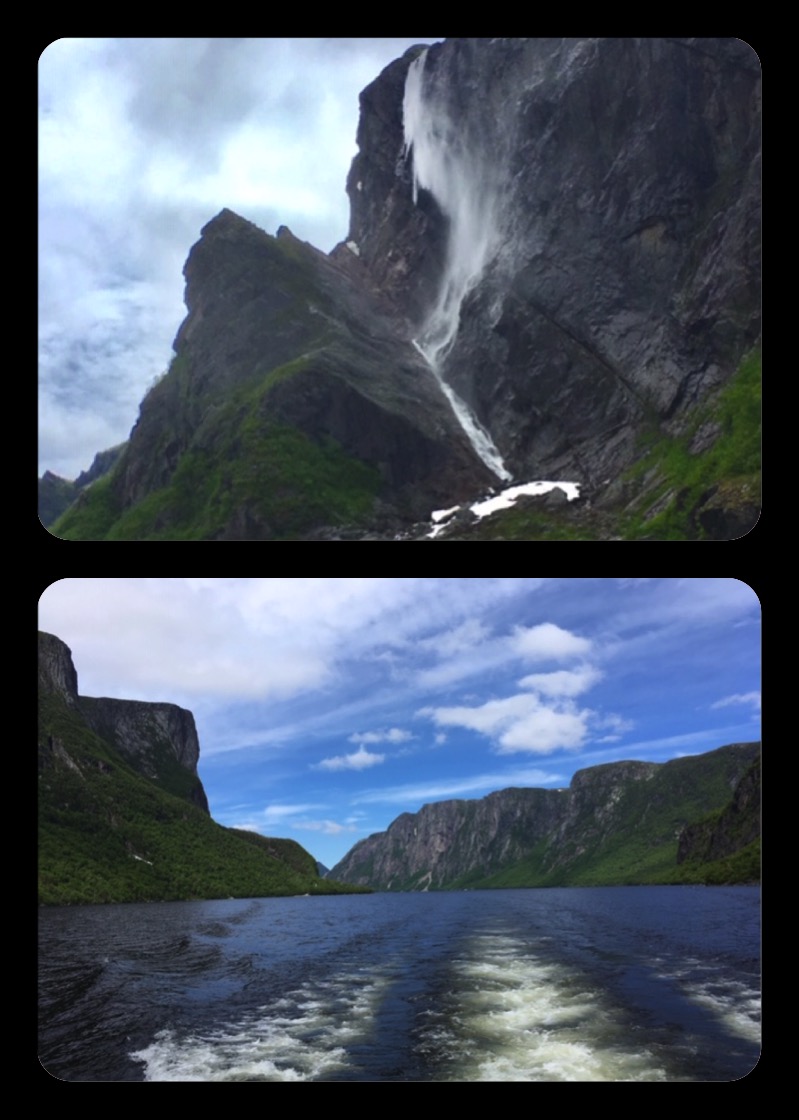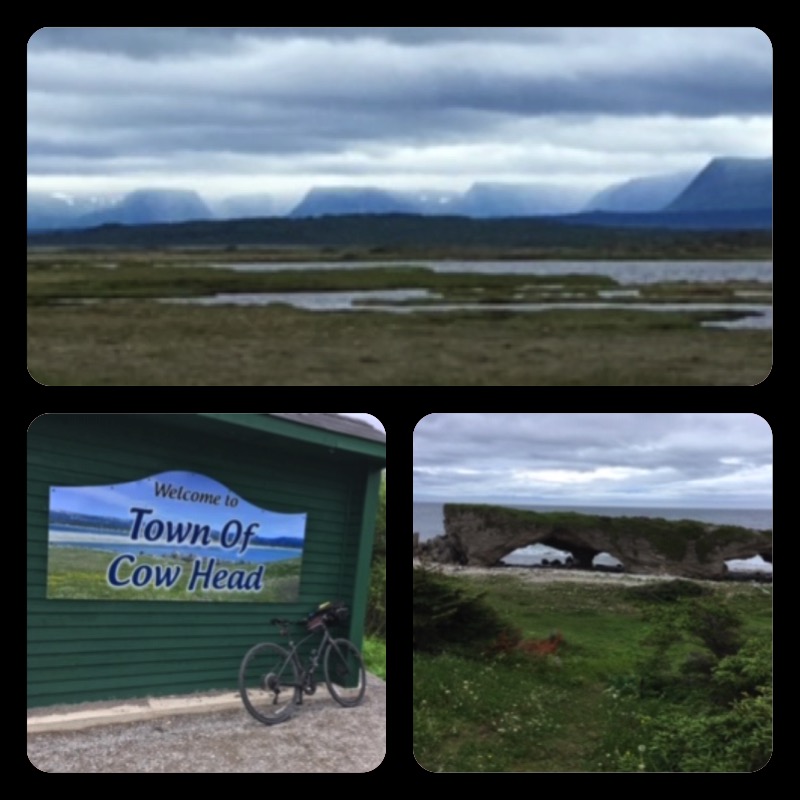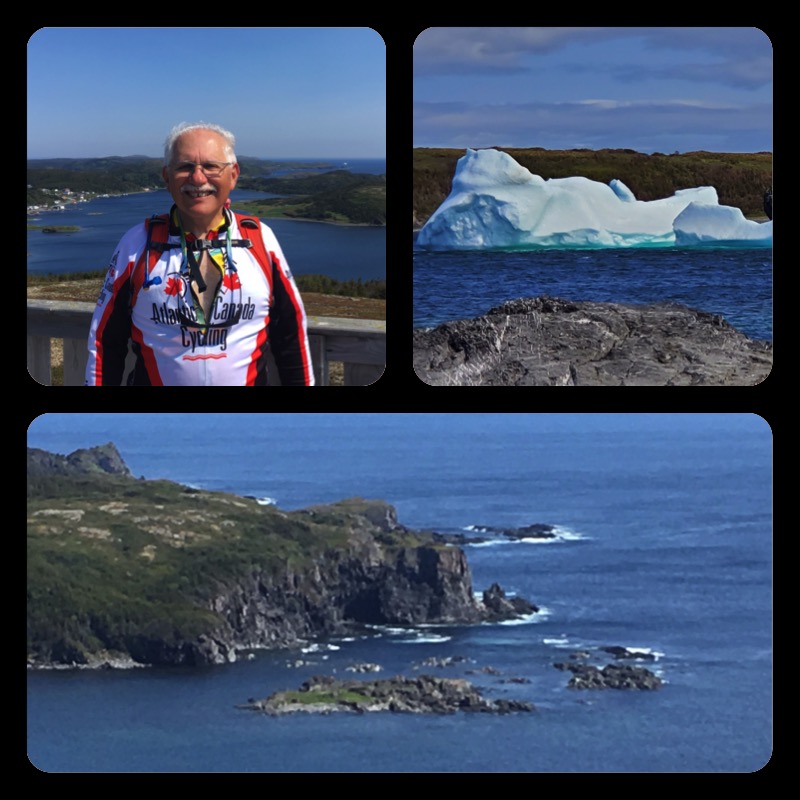Follow John's Adventures
Bike Trek 2019
June 28 - July 8
FRIDAY, JUNE 28
Greetings from Deer Lake, Newfoundland. Getting a bicycle and camping gear to this place is something of a logistical challenge. That’s over 100 pounds of stuff including a large case made to carry all the pieces of a disassembled bike. Yesterday I drove to Montreal and this morning flew to Deer Lake via Halifax. The bike is now fully assembled and I took it out for a short test ride. Tomorrow starts the tour!
Many folks to whom I’ve described this trek, recently, have little or no knowledge of Newfoundland or even where it is, so here’s a little background. If you take a flight from New York City to London, you pass Newfoundland about 1/3 of the way through your journey. The island of Newfoundland is about the size of New York State but the Province that includes Newfoundland and Labrador is about three times the size of New York State. The whole province has about a half million people and they mostly live in the eastern end of the island near The capital of St. Johns. I’m told that in the northern peninsula where we will be cycling, the moose population far exceeds the human population.
SATURDAY, JUNE 29

We are off. Today was a very intense day. It started with chilly rain as we climbed into Gros Morne National Park. We started and ended at sea level but in between ascended and descended 4000 feet passing through some strikingly scenic country. Gros Morne offers some of the world’s best illustrations of plate techtonics. Its rocks, once part of an ancient ocean, were thrust up by colliding continents, to become the northern most part of the Appalachian Mountain chain. Much later, glaciers carved this place into the spectacular landscape that I saw today. The last part of today’s ride crossed the Tablelands from Bonne Bay to the fishing village of Trout River. Tablelands is a mountain range of barren orange-brown rock, one of the world’s few examples of exposed material from the earth’s mantle.
SUNDAY, JUNE 30


Today we returned to Bonne Bay by re-crossing the Tablelands. We had to leave early in order to make a 9:30 ferry across the bay and we fought headwinds all the way. The ferry crossing was very scenic and from Norris Point, on the other side, we biked over a hill to the village of Rocky Harbor, then continuing north to our campsite on Berry Hill.
This bike tour is very different from the Erie Canal. Rather than having hundreds of participants, there are only 13 of us, supported by three staff persons. Rather than having all meals provided, each biker is responsible for purchasing his own groceries at a designated grocery store on route. These groceries are transported to the campsite where we do our own cooking. This evening we had a potluck dinner sharing cook stoves and utensils. It was a great way for us to get to know one another.
MONDAY, JULY 1




Today was Gros Morne activity day. That means we were free to enjoy the park with several options for activities and will resume biking tomorrow. I joined fellow bikers Keith and Jessica for a boat cruise on Western Brook Pond. Carved by hundreds of successive glaciers over the last 2 million years, this body of water was a fjord 9,000 years ago. But as the weight of the ice was removed, Newfoundland rebounded and the fjord became a freshwater lake about 100 ft above sea level. No words can describe the striking beauty of this place; just look at the pictures. A stunning rainbow at dusk made for the perfect end to a perfect day!
TUESDAY, JULY 2

I got up this morning in pouring rain and temperatures around 50F. But by the time I had packed my gear and had breakfast, the rain had stopped. I decided to get an early start, ahead of the other cyclists. But as I got out on the open highway, I realized that I was riding into a brisk headwind. For the first 15 miles or so, I enjoyed the solitude and the scenic views with seacoast to my left and mountains to my right. I made a brief stop at Green Point. Here geologists first discovered fossils that define the boundary between the Cambrian and Ordovician periods, and now this location is the world's largest geological benchmark for this boundary. As I continued north, the cold and the headwinds made riding really miserable. In the village of Cow Head, I made a stop and joined two of my fellow cyclists for a warm lunch. In the afternoon, the headwinds became worse, almost gale-like and by the time I reached our campsite at Portland Creek, I was totally wasted. Today was, without question, my toughest cycling experience.
WEDNESDAY, JULY 3
Today was a day when I wondered why I do cycling. I got up to a chilling 39 degrees. The northerly headwinds were somewhat diminished but still there. It took me a mile of biking before I realized that it was my winter cap on my head and not my helmet. Once underway the second time, I followed our course through a desolate 50 mile stretch of coastline with only a couple small villages. The breezy air was so thick with fog, and I spent all morning fighting the chill and dampness. By noon, the rains started. I was borderline hypothermic and having no fun. At the 35 mile point, I had had enough and accepted a ride from the tour's SAG wagon to our evening stop in the fishing village of Port Choix.
THURSDAY, JULY 4

After a good night's rest and a good breakfast, I felt much better today and had a terrific ride. Temperatures were about the same as yesterday but it was calm and dry and that made all the difference. I did the 57 miles to our next stop in the village of St. Barbe in under six hours including two brief stops along the way. This route had an endless expanse of wild spruce forests, bogs, ponds, rivers, coastline and just a few small fishing villages.
This coastline has a long history of human occupancy. Indigenous people were here 9,000 years ago. French as well as English have been fishing these waters for several centuries. Until the 1960s there were no roads in the northern peninsula and the villages were only accessible by sea.
FRIDAY, JULY 5

Today was Labrador day and for the first time all week the weather was gorgeous. We made a morning crossing on a very large ferry from St. Barbe to the small village of Blanc Sablon, at the very eastern end of Quebec. From here we headed east up the coast and were greeted by a large sign welcoming us to Labrador, "The Big Land." This is an enchanting place with rugged treeless coastline, steep hills, and rolling tundra. I continued east to a vista overlooking the village of L'Anse-su-Clair, then returned to Quebec going a few miles further west where I discovered an iceberg grounded a short way off the coast. Returning to the ferry, we watched fisherman unloading their catch of herring before we departed back to Newfoundland.
SATURDAY, JULY 6

Today was the longest ride in the tour, 82 miles with a total climb of 2,400 feet. I've never ridden that far in one day and I was unsure whether I could do it. Stating out under clear skies, I rode northward along the coast for about 30 miles, passing through a number of small villages. Then the road turned inland, beginning the long trek across the peninsula. For the next 40 miles, I did not pass a single house, just wild barren wilderness. Midway through the inland trek, it started to rain. I was cold and fatigued but somehow I kept on pushing and made it into camp.
SUNDAY, JULY 7



We got up to a warm sunny day. Today was to be the highlight of the tour, a visit to L'Anse aux Meadows, where Vikings from Greenland first visited North America 1,000 years ago. We would return to the same campsite so this was a ride out and back. On the way we stopped in the village of St. Lunaire and did a short steep hike to a hilltop with that expansive view of the eastern coast of the peninsula. From this spectacular place, we saw several icebergs as well as a moose. We later got a close-up view of one of these icebergs which was grounded in a small cove.
L'Anse aux Meadows is a beautiful site and the story of the Norse voyages is fascinating. There were reconstructed sod houses and an iron forge. We were so grateful that it started out to be a sunny day. But it turned out not to be such a perfect day. As we began our return ride, we encountered very gusty headwinds. It was a struggle getting back to camp.
MONDAY, JULY 8


The last day of my ride has arrived, an easy 17 miles to St. Anthony, from which we would be bussed back to Deer Lake where we began. It was another beautiful day but the winds had shifted from yesterday's westerly to southeasterly. No wonder the Vikings left Newfoundland; wherever you are headed, you have headwinds! The welcome sign for St. Anthony read, "Let Your Spirit Sail," and mine certainly were. Ten days ago, I had joined twelve strangers and through our shared struggles and adventures, we had all become great friends. We ended our journey at Fishing Point, a beautiful rocky bluff just east of town. From here it is an open ocean all the way to Ireland.
It will take me almost two days to get home. So stay tuned. I hope to offer some final reflections on this experience tomorrow as I fly back to Montreal.
TUESDAY, JULY 9
I have not yet commented on my companions. We were 13 cyclists, supported by a staff of three; nine women and four men, nine Canadians and four Americans. Ages ranged from mid thirties to 72. I was the oldest but Keith was only 5 months my junior.
I felt like such a novice compared to most. Like Al, who had cycled from Montana through the Yukon to Anchorage or Keith who had cycled from Victoria BC to St. Johns NL and then, a few months later from Nairobi to Capetown. And there there was Pixie, who we nicknamed "slow but steady." She will take the ferry from here to Nova Scotia and cycle home to Connecticut solo and unsupported (She also did Key West to home solo).
As much as this was a time of making wonderful new friends, it was much more an experience of being in solitude. Most of the time, I cycled alone. Shifting gears and watching for traffic becomes so automatic that I found myself often in a joyful meditative state, just taking in all that was around me. The natural beauty and the vast wildness of this place is incredible.
I am drawn to the realization that travel and migration of humans across our globe has been, for thousands of years, under their own power. It is so much easier with the benefit of smooth pavement and chains and sprockets. Yet, as I returned in the bus and landmarks that I had so enjoyed wizzed by like a high speed rewind, I was so very aware of how much we miss in our haste.
An old Newfoundlander named Albert who I met in Port au Choix, who used to bike, told me "motion is lotion." I would add to his words, "slow motion is lotion."
This adventure has been all about pushing one's limits, just as Girls Inc. teaches young girls to push their limits. Thank you for following my journey and thank you so much for support Girls Inc.